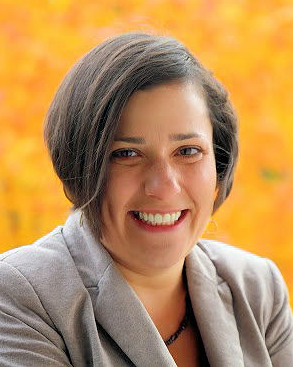“Seven Questions” with Sara Goldrick-Rab
November 16, 2015

Sara Goldrick-Rab
What is the focus of your current work?
The cost of living while attending college comprises 50-80% of students’ annual expenses. Colleges estimate these costs in their official statistics, recognizing that to devote energy to school, students must have a way to pay for their room and board that doesn’t involve being at work all the time. In theory, students navigating poverty or otherwise lacking the necessary funds can qualify for financial aid. In practice, the supply of aid falls short of the demand, and many students go without daily necessities. At the Wisconsin HOPE Lab we’re working on (a) better estimating the true costs of living while in college, (b) finding effective solutions to helping students cover those costs, and (c) examining what happens to students when they cannot cover those costs.
What is the significance of this work?
Tuition and fees are the cost of college access—they help you enroll. But the ability to cover the rest—the living costs—is what determines whether you finish. So this issue is critical to efforts to help more students complete their degrees. Today, one in three Pell recipients in public higher education starts college but leaves without any credential and, on average, carries $9,000 in debt. Reducing living costs will help boost completion rates and lower that debt.
What is the background of this work?
We began this work with the Wisconsin Scholars Longitudinal Study, a project initiated at WCER in 2008. While examining the impacts of a private need-based grant program on Pell recipients around the state, we came to learn about serious challenges students face in covering the costs of housing and food. In fact, some were going hungry and a few were homeless. Fast forward, and we are now measuring food and housing insecurity in multiple ways, including a new national survey of community college students. We’re also engaged in a multi-sited ethnographic study to learn about costs of living on campus that universities tend to overlook—such as how the rules associated with meal plans end up leaving students short of funds.
What is the next step for this research?
We are raising funds for an emergency aid demonstration program. In a recent report, we described how more than 100 such efforts around the nation operate—now we want to build and test the efficacy of a program that distributes cash, quickly, to meet students’ needs and keep them in college. We’re also working with the U.S. Department of Housing and Urban Development on efforts to study how local housing authorities can provide subsidized housing to undergraduates.
What is your project’s burning question?
What does it mean to fully incorporate economically vulnerable people in higher education? This is a social justice issue and it will transform the schools themselves.
What is unique about your work?
Our research is translational—it begins with basic studies that describe the problem, moves into explanatory research and then we test interventions. Throughout this effort we’ve worked closely with practitioners, advocates and policymakers to get a better grasp of the structural barriers and possible solutions. We share our findings as they emerge. Our team is experienced, with several members having experienced housing and food insecurity. Our connections to these challenges are not merely academic.
What is your process?
We try to balance where the needs are most urgent, the policy context is ripe and where the research opportunities present themselves.
What’s the hardest part of doing this work?
There is so much to be done in this area. It’s so understudied and the need is so urgent. We have at least five projects in the field now and are developing another five. We need additional funding to help us test interventions and to begin collecting data in a wider range of settings. We want to understand the influence of university and college settings on how students live in college. All of this has to be planned with funds raised to support it.


